
Review on 🎧 KZ ZS10 HiFi IEM Earbuds, Five Driver In-Ear Headphones Monitors Earphones (Black) - No Mic by Ikki Martini

High quality, great for live sound
I use IEM (in-ear headphones) for live performance on stage (acoustic guitar, bass, percussion and vocals) and live sound engineering, so I need reliable and efficient monitors that don't color the sound (meaning the monitors don't emphasize low, mid or high tones so what I hear is as close as possible to the original for a good mix). These IEMs are probably the best I've heard for the price! Advantages: very smooth frequency response - does not color the sound. A lot of beginners are used to "bass" headphones - they put out too much bass, more than the original music, so they sound different when you hear them, but that's what makes them so great. They let you hear what you're actually playing or what the band is playing, so you know how to adjust the sound. This is especially important if you're recording or streaming live - these IEMs give you the EXACT information of what's live or being recorded. So if you have a YouTube vlog, record your own music, or perform on stage or behind a mixer, flat frequency response is great! Frequency Response – These IEMs receive fairly low frequencies and fairly high frequencies. I was surprised to hear the deepest overtones of my bass play with them. And they don't stop when you increase the frequency. Weight - They're not too heavy on the ears, making them more comfortable than some of the "molded" or "fitted" IEMs, especially during long workouts or sets. Cons: Headphones or Earbuds - I've never found a set of headphones or IEMs with comfortable standard earbuds, so I'm not deducting stars for that. . The plastic tips are awful and scratchy and they drive me nuts instantly. But even my BOSE IEM headphones were pretty uncomfortable, so it might be me. Also, the earbuds don't fit my ears well, letting low frequencies through instead of resonating. I always buy a set of memory foam ear tips that fit my ears well (just make sure you buy the right size for your ears). This seals the ear canal, provides hearing protection during live performances when volume is critical, and delivers great bass. that the exit point of the IEM was angled too far back to fit my ear perfectly, but that's one of the tradeoffs of non-molded IEMs. I don't shoot stars because it's just my big head and not a design issue. The placement of the cords doesn't affect the IEM or how comfortable they are as I simply folded the shape up and around the ear. They are good just not perfect for my big head. Also, the cable doesn't have a sliding clip that holds the earcups together. Most IEMs and headphones, by the way, have a little clip or tube that the wires go through, and someday you can slide it up and tighten the wires around your head. Placing cords under your shirt when playing on stage is important because the cords won't pull on your ears when you move your head. I got around this by simply tying a knot where the clip would be and they turned out perfectly. I'm not deducting stars for this as they weren't specifically designed for hidden IEMs and so aren't a design issue. Even a simple knot without any additional equipment or purchases could solve my problems. Missing Case - In-ear headphones, especially those with foam tips, are easily damaged when stored in a bag or gear case. I have several boxes laying around and I was able to pick one up for her. If you're not careful, your cable lugs in your gear bag will be ripped and destroyed, and your cable wires will be cut or broken. I recommend everyone to get a case with foam tips and make sure it's bigger than you think you need so they have room to avoid being crushed and a pocket is handy to store extra clips. ACCESSORIES: A silver cord is available here at Revain that is much more comfortable to the touch, flexible and looks better. I recommend them along with the case and foam ear tips. After all, these are the ideal headphones for amplifying live sound, musicians who are both on stage and in the studio, and people who want to hear music as it originally was. produced. If you're looking to add bass or lower mids (like with music headphones) then they're not for you, and they shouldn't be. I compared them to other IEMs that cost $50, $150, and $1200. I use them more often than other die-cast IEMs, even very expensive ones, because they are lighter, sound just as good and fit well! I recommend trying a few. For $60 you can't go wrong!
- Weight
- Some small things
New products
Comments (0)
Top products in 🎧 Earbud Headphones
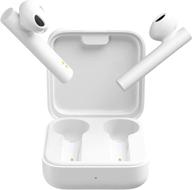
Upgrade Your Music Experience with XiaoMi True Wireless Earphones 2 Basic - Longer Battery Life and Superior Sound Quality (White, International Edition)

341 Review

🎧 HUAWEI Freebuds 4i: Wireless Earbuds with Active Noise Cancelling & 10H Battery Life in Black

279 Review
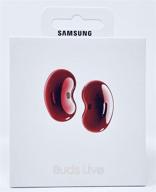
🔴 Sleek Mystic Red Samsung Galaxy Buds Live with Active Noise Cancelling - Wireless Earbuds

274 Review
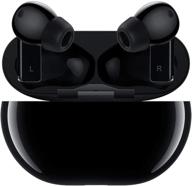
🎧 Huawei FreeBuds Pro Earbuds with Advanced Noise Cancellation, Bluetooth 5.2, and 3-Mic System for iOS and Android (Carbon Black)

295 Review
Another interesting products

Bose QuietComfort 25 Acoustic Noise Cancelling Headphones with 3.5mm Wired Connection for Apple Devices - Black

43 Review
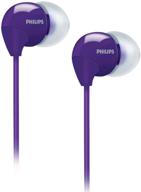
Purple Philips SHE3590PP/28 In-Ear Headphones - Superior SEO

189 Review
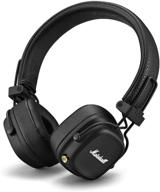
🎧 Experience Unmatched Audio Quality with Marshall Major 4 Bluetooth Headphones

104 Review
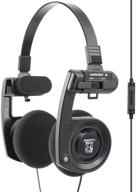
Massdrop x Koss Porta Pro X On-Ear Headphones: 🎧 Noise-Cancelling Mic, Voice Assistant, Track Skip | Collapsible Midnight Blue

314 Review

